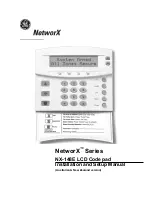
3 - Command Set
DynaPro Mini| PIN Encryption Device | Programmer’s Manual (Commands)
Page 26 of 128 (
D99875629-43
)
3
Command Set
This section describes the full device command set. Because many commands are common across all
connection types, it is helpful to first read and understand section
familiar with the types of available commands.
3.1
About Big Block Data and TLV Format
There are some cases where command data (host to device) or response data (device to host) requires
special treatment. For example, some commands require the host or device to transmit large blocks of
data that exceed the maximum packet size of the chosen data transport layer; other commands require
transmitted data to be encrypted and/or encoded, fully received, then decrypted and/or decoded as a single
piece. For commands and responses that require these sorts of special treatment, the usage information in
this document indicates that the command or response uses
big block
data buffers.
The device provides support for transmitting big block data by implementing two reports: For feature
reports that require big block data transmission, the host should first call
to transmit the relevant data to the device, then invoke the desired command. In
cases where the device sends big block data to the host, the host will first invoke the desired command,
then the device will send one or more instances of
Report 0x29 - Send Big Block Data to Host
. The
host must then assemble / parse / decrypt / decode the data.
Big block data is frequently encoded using an industry standard Tag-Length-Value (TLV) format. For
detailed information about parsing EMV response data in TLV format, see
EMV Integrated Circuit
Card Specifications for Payment Systems 4.3, Part IV, Annex B Rules for BER-TLV Data
Objects.
For a detailed example of parsing TLV data, see
Appendix A.2 How to Parse Encrypted Big
Block EMV Data From An SRED Device
. For details about the specific tags used by a given
command, see the usage information for the command.
3.2
About SRED / Non-SRED Firmware (Non-SRED only)
The device can be loaded with one of two types of firmware, depending on how the integrator wants the
device to transmit card data to the host:
The SRED version of the firmware enables Secure Reading and Exchange of Data. In this mode, the
device will not allow complete unmasking of card data, such as the PAN.
In some cases, the solution may require further options for unmasking and encrypting card data
before the device transmits it to the host. In those cases, the device can be loaded with the Non-
SRED version of the firmware.
Some commands behave differently depending on whether the host is communicating with an SRED
device or a non-SRED device. To determine which type of device the host is communicating with, use
Command 0x1A - Request Device Information
and examine the Capability String’s SR parameter. The
differences in command behavior between SRED and non-SRED devices are described in the usage
information for each command.
















































